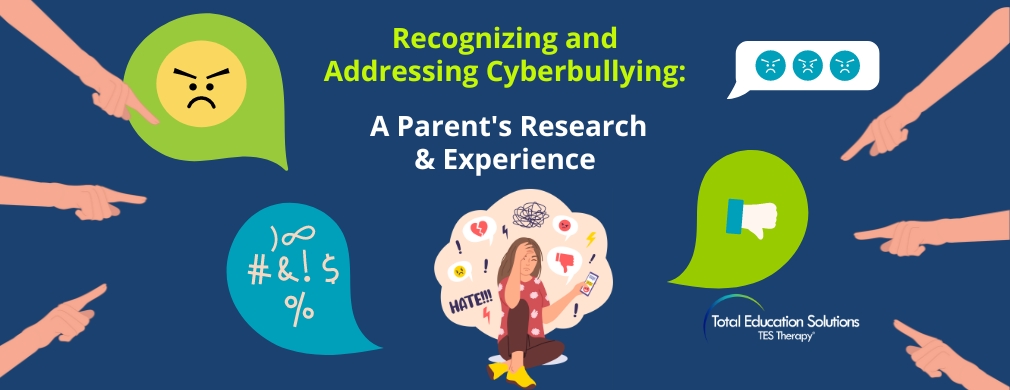Being a parent is never a cakewalk, but parenting during a pandemic is an entirely new challenge for families of children with special needs. Here are a few tips.
1. Parents, take care of yourself first!
Covid-19 is much like being on an airplane when we are instructed to put on our own oxygen masks first in case of an emergency. We need to be sure that we stay strong so that we can be available for our children when they need us. Find time for yourself. Make an agreement with your children for daily “alone time” when you can read a book, take a hot bath, exercise, or just spend time relaxing and regrouping.
2. Reach out.
Stay connected to your child’s teachers and therapists to help you and your child continue with his or her learning program at home. Feel stuck? Ask your child’s teachers or therapists for strategies that they have found worked with your child. Don’t forget to build a network of support with other local parents of children with special needs. Or, google “parents of children with special needs” and find a blog that resonates with you. Parents are our children’s first teachers. You know your own child best. Learning how other parents are working in partnership with their child with special needs at home during Covid-19 can be invaluable. Your network of support or a blog for parents of children with special needs can be a “safe space” to vent your concerns.
3. Identify your child’s concerns.
We are all feeling a sense of anxiety, loss, and, even, grief that our old way of life has been put on hold. For a child with special needs, any change can be especially upsetting leading to different reactions: becoming argumentative or self-injurious, or even having temper tantrums. Avoid labeling your child as manipulative or a “behavior problem”. Observing your child’s “body language” is a helpful way to discover your child’s concerns. Boredom, whining, frustration, and temper tantrums can mask your child’s underlying fears. Simple statements such as “You’re ok. You’re safe. I’m here. We can work this out together”, etc. can do wonders in defusing a tense situation. Then, when your child is calm, you can ask: ‘Tell me (or show me) what’s bothering you’.
4. Create a Visual Schedule.
Creating a family Visual Schedule three days in advance in partnership with your child and the rest of your family can establish a sense of security and safety for not only your child with special needs, but the entire family as well. Take a minute to google “Visual Schedules” that are free and can be easily downloaded. Be sure to make and record agreements between you, your child and other members of the family to balance work from home and distance learning, recreation, and family time. Use the Visual Schedule to make and record agreements that monitor how much time you, your child, and your family should spend in front of the TV or computer. Be sure to make time in your Visual Schedule for your family to stay physically active to avoid “cabin fever”! When learning breakdowns occur, refer back to the Visual Schedule you have created with your child to re-create your agreements and that sense of security and safety: “What are our agreements? What does our Visual Schedule say? What should we be doing now?”
5. Use Structured Choices to minimize learning breakdowns.
Learning breakdowns can take many forms, a communication breakdown between you and your child, or your child and another family member; a task or activity that overwhelms your child; unexpected changes in routines that requires a modification in the Visual Schedule you created
with your child. Structured Choices can also be used to relieve tensions, or make individual or family decisions, or resolve communication breakdowns. Remember, our words count. Broken promises, thwarted intentions, undelivered communications, and unfulfilled expectations can lead to learning breakdowns. “When you (complete your worksheet, clear the table, brush your teeth, etc.), then you may (take a break, use the computer, watch TV, etc.).” Structured Choice is the guidance you give your child based on your child’s concerns and levels of learning competence. Structured Choice is not meant to be used to control, dominate, or punish your child.
6. Remember, we are all innate learners and we all learn differently.
Each of us has preferred ways to receive information or express ourselves; through our ears (or aurally); through our eyes (or visually) or by touch (or kinesthetically). At times we may think our special needs children aren’t listening to us when, in fact, visual cues are a much more effective way to communicate with them. Kitchen timers; thumbs up/thumbs down or other hand signals; and hand-made signs (red for stop; yellow for caution; and green for go) can be a fun and helpful way to avoid miscommunications between you and your child. Also, when giving directions, pay attention to whether or not your child responds better to one step rather than multi-step directions. “Please hang up your towel” vs. “Please hang up your towel and put on your pajamas.”
7. Avoid getting caught in a “vicious circle” with your child.
Use the Visual Schedule to avoid bumps in the road that occur around mealtimes, bedtime, transitions between one activity and another, etc. Make agreements ahead of time with your child using Structured Choices: “Remember, when we created our Visual Schedule, we agreed that you could use your computer for 15 minutes before bedtime, after you brush your teeth and get your pajamas on? When you brush your teeth, (and get your pajamas on), then you can use the computer for 15 minutes”. Focus on the positive. Don’t sweat the “small stuff”. Yet, celebrate the “small steps”. Smiles, laughter, and humor (not sarcasm) goes a long way to diffuse tensions and create beams of sunshine for the entire family.
8. We are all in this together. And we all have a contribution to make to the well-being of ourselves, our families, and others.
Work in partnership with your child with special needs and your family to identify projects that might help others: making cards to send to friends or relatives; making masks for your family and others; making family calls to friends and family members, especially the elderly or those who live alone. Welcome the help of your child’s siblings with your child’s schoolwork, recreational time, or physical activities. In turn, don’t hesitate to ask your child with special needs to help his or her siblings in small and big ways. Loving each other no matter what is a big contribution. And, remember, we act as mirrors for our children who look to us for a sense of security, safety, and well-being. When tensions arise, take a deep breath. Don’t forget to keep calm and carry on. Our goal is to create a family environment of mutual support, mutual learning, mutual trust, and mutual respect.
By: Nancy J. Lavelle, Ph.D.
Dr. Lavelle received her Ph.D in Educational Psychology from UCLA. She founded a non-profit organization, the Institute for the Redesign of Learning, in 1974; a private company, Total Education Solutions, Inc., in 1997; and Taking Charge, LLC in 2005. She is the creator and principal author of several training programs for educators, therapists, administrators, and others working with learners of all ages and all abilities including the Taking Charge® Parents and Caregivers Workbook (2019).


 22 Apr 2020
22 Apr 2020 







